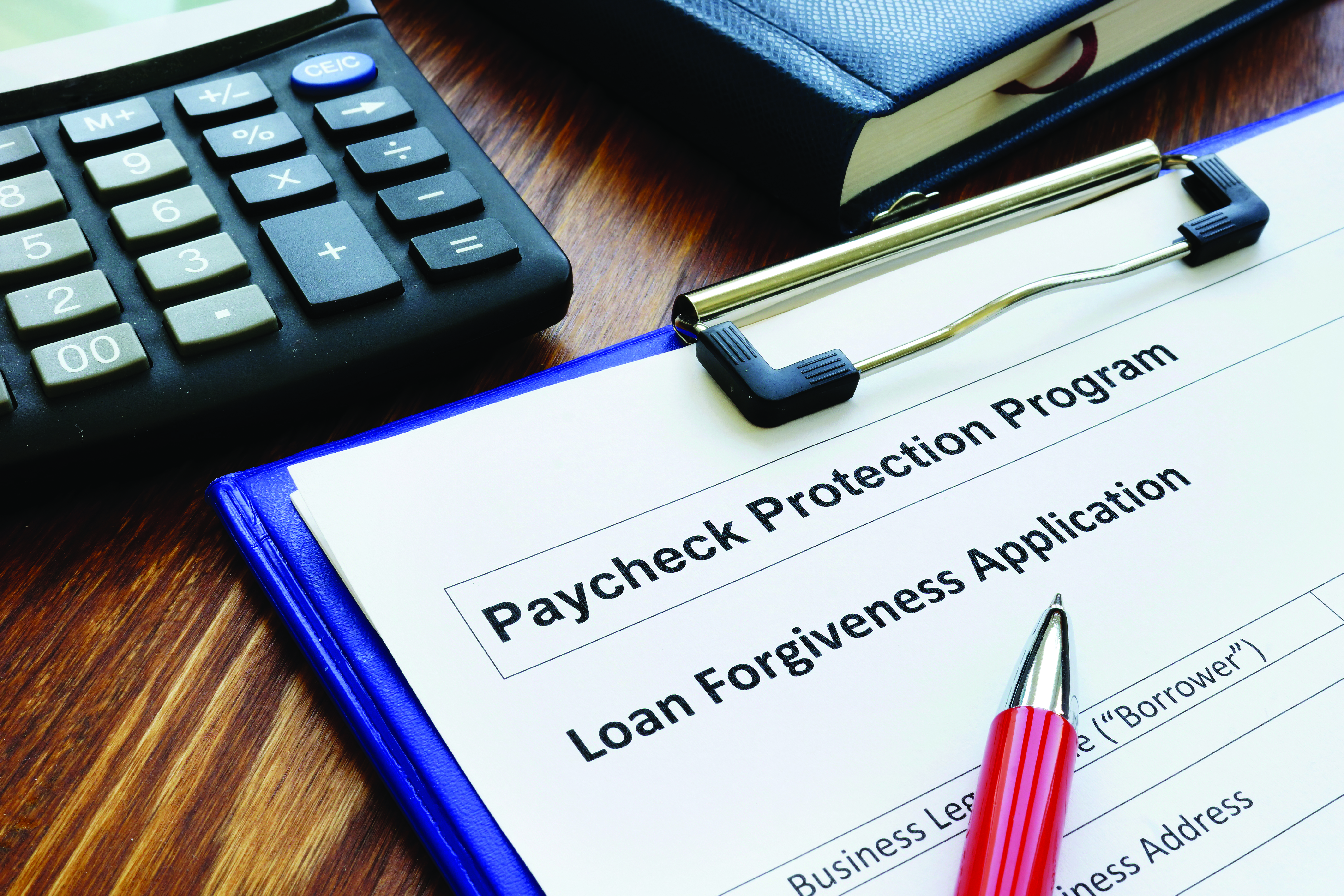If you received a Paycheck Protection Program (PPP) loan, you may be wondering what is next and what you need to know to get your PPP loan forgiven. Forgiveness is not automatic, so you will need to apply for forgiveness in order to receive
it, but there are a number of strict requirements. Here is the information you will need to apply at your bank to receive forgiveness for your PPP loan.
New PPP Qualified Uses
According to the Small Business Administration (SBA), you must use 60% of the loan amount on payroll costs that include employee salaries, group health care benefits, retirement benefits, and state/local taxes on employee salaries. The remaining
40% can be used for eligible non-payroll costs, including mortgage interest, rent, and utilities. This is a change, as the original CARES Act required a 75/25 split.
New Federal Stimulus Law
The original PPP was part of the Coronavirus Aid, Relief, and Economic Securities Act (CARES Act). The PPP Flexibility Act, which became law on June 5, 2020, provided a second round of PPP funding and introduced several important changes to
the loan forgiveness rules.
New Payroll Period Allowance and Flexibility
A major change included in the PPP Flexibility Act is the original 8-week forgiveness period, which is now 24 weeks. If you received a PPP loan on or before June 5, 2020, you now have the option of taking 24 weeks or 8 weeks to spend the loan
money. A PPP loan issued, after June 5, automatically has a forgiveness period of 24 weeks or from the loan date to December 31, 2020 (whichever is shorter).
New Alternate Payroll Period Allowance
You now can choose to calculate payroll costs using an 8-week period, starting the day your loan was funded (Covered Period) or using an “Alternative Payroll Covered Period” that aligns with your regular payroll cycle. For example, if you
pay employees bi-weekly, you can start on the first day of your business’s first pay cycle, following disbursement of your loan, making it easier to calculate more of your total payroll costs.
New FTE Calculations
Recently, the Small Business Administration issued guidance on how to use full-time equivalent (FTE) for PPP Loan Forgiveness calculations. The FTE calculation converts a company’s total employee count (including both full- and part-time employees)
into the “equivalent” number of full-time employees (working 40 hours a week) Two options of calculating the number of FTEs are provided:
- Calculating based on actual hours worked
- Simplified approach of using an FTE of 1.0 for employees working 40 hours or more and 0.5 for employees working less than 40 hours in a week

New Allowance for FTE Reductions
Also the SBA issued guidance on full-time equivalent (FTE) reductions. There are rules for workforce reductions that were not filled by new hires. Those reductions can be exempted from forgiveness calculations for certain reasons as
follows:
- Any positions for which you made a good-faith offer in writing to rehire an employee, which was rejected by the employee
- Any employee that was terminated for cause, voluntarily resigned, or voluntarily requested and received a reduction of their hours
- Any offer to restore wages or hours to previous levels that were rejected by employees
- You were unable to hire similarly qualified employees for unfilled positions by 12/31/20
If your FTE reductions do not qualify for the above, the new PPP Flexibility Act allows you more time to restore FTE levels (by December 31, 2020), rather than the original CARES Act deadline of June 30, 2020.
FTE Reduction Allowances (Safe Harbors)
Safe Harbor 1 allows reductions in forgiveness, based on reductions in FTEs, if you are unable to return to the same level of business activity that you had prior to February 15, 2020, due to compliance with the following regulatory organizations:
- Secretary of Health and Human Services (HHS)
- Director of the Centers for Disease Control and Prevention (CDC)
- Occupational Safety and Health Administration (OSH)
Safe Harbor 2 allows you to reduce your FTE employee levels in the period between February 15, 2020, and April 26, 2020, provided you then restored your FTE employee levels by December 31, 2020 to the FTE employee levels in the pay period
that included February 15, 2020.
Is Your Bank Ready?
Most banks have not yet begun processing applications, but soon, many banks will begin processing them online. There are now 3 PPP Loan Forgiveness Application forms (3508S, 3508EZ and 3508) that are available on our COVID19 webpage along
with an explanatory webinar. The information required by these SBA forms is the same information that your bank will require electronically.
Loan Payment on the Amount Not Forgiven
Any amount that is not forgiven must be paid back. The terms are favorable to you. The loan period is 2 years, if your loan was issued before June 5, and 5 years, if issued after June 5. The interest rate is fixed at 1%. More good news: loan
payments will be deferred for 6 months.
If you have kept good records of your payroll expenses and other qualified costs, your application for forgiveness should go smoothly. Qualifying for PPP loan forgiveness will help you preserve and defend your FED business. And remember, too,
or if you were unaware, Brooks has an entire webpage devoted to COVID-19, complete with the Latest News, a State and Local COVID-19 Response Dashboard, and additional Federal Resources to help you mitigate COVID’s impact on your business.
Log on at BrooksEquipment.com and select the “Resource” tab at the top to access our COVID-19 Resource page.